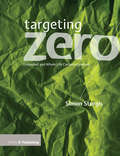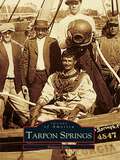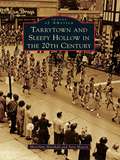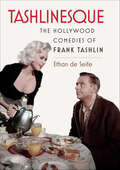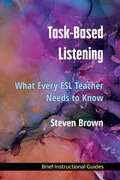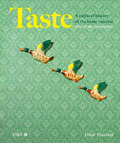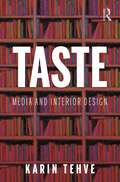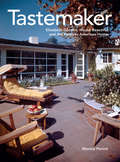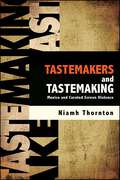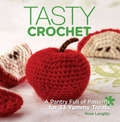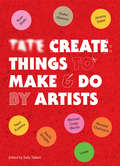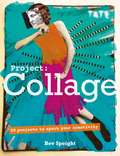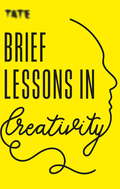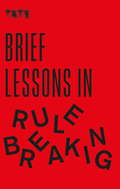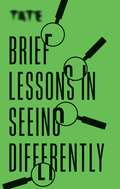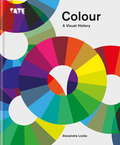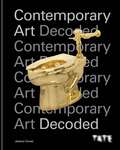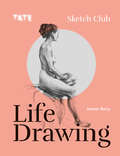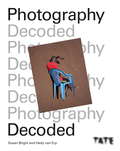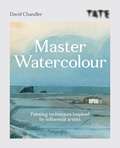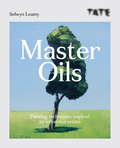- Table View
- List View
Targeting Zero: Whole Life and Embodied Carbon Strategies for Design Professionals
by Simon SturgisEmbodied and Whole Life Carbon will change the way buildings are designed, yet carbon emissions associated with the construction and life of buildings are not yet wholly understood by the profession. Energy is assumed to be the province of services engineers, yet energy from materials is as big an issue. Architects have the opportunity to take the lead in redefining how buildings are designed to achieve a low carbon future.
Tarpon Springs
by Dolores KilgoTarpon Springs, the South's Mediterranean port city named for the abundant fish found off its coast, is hailed as the "Sponge Capital of the World." The oldest town in Pinellas County, Tarpon is located along the Anclote River where the river flows into the Gulf of Mexico. History in this coastal community dates back to the 1800s with the arrival of the first settlers. The advent of the railroad and the building of the Anclote Key Lighthouse brought many positive changes to the area; wealthy Northerners flocked here creating a winter haven while numerous fishing vessels plied city waters. Enterprising entrepreneurs boosted the city's economy and reputation with the harvesting of sponges. The Greek immigrants who came to the area to continue their traditional trade of sponge diving forever enriched the city's cultural makeup with their families and customs. Today, the progressive community continues to be a shining example of historic preservation and cultural variety. Images of America: Tarpon Springs celebrates the fascinating history of "the Venice of the South" and invites readers to experience this breathtaking locale through words and vintage photographs. Rare images, including scenes of the early sponge divers, businesses, residents, festivals, and celebrations, abound in this unique volume. Natives, visitors, and history buffs alike will delight in this visual tour of a picturesque and historically interesting community.
Tarrytown and Sleepy Hollow in the 20th Century
by Sara Mascia Maryann MarshallLocated just miles north of New York City, the Hudson River villages of Tarrytown and Sleepy Hollow experienced the highs and lows of the 20th century. The villages experienced life in a grand scale from the 1909 Hudson Fulton Celebration to the 1970s village centennial and American bicentennial festivities. Photographs from the collection of the Historical Society, Inc., serving Sleepy Hollow and Tarrytown bring the 20th century to life. Tarrytown and Sleepy Hollow in the 20th Century includes images of local and world-renowned personalities, the changing business landscape, growth and consolidation of the public schools, participation of the local population in various business and social organizations, changes in fashion over the years, and the construction of the Tappan Zee Bridge in the 1950s.
Tashlinesque: The Hollywood Comedies of Frank Tashlin (Wesleyan Film)
by Ethan de SeifeFrank Tashlin (1913–1972) was a supremely gifted satirist and visual stylist who made an indelible mark on 1950s Hollywood and American popular culture—first as a talented animator working on Looney Tunes cartoons, then as muse to film stars Jerry Lewis, Bob Hope, and Jayne Mansfield. Yet his name is not especially well known today. Long regarded as an anomaly or curiosity, Tashlin is finally given his due in this career-spanning survey. Tashlinesque considers the director's films in the contexts of Hollywood censorship, animation history, and the development of the genre of comedy in American film, with particular emphasis on the sex, satire, and visual flair that comprised Tashlin's distinctive artistic and comedic style. Through close readings and pointed analyses of Tashlin's large and fascinating body of work, Ethan de Seife offers fresh insights into such classic films as Will Success Spoil Rock Hunter?, The Girl Can't Help It, Artists and Models, The Disorderly Orderly, and Son of Paleface, as well as numerous Warner Bros. cartoons starring Porky Pig, among others. This is an important rediscovery of a highly unusual and truly hilarious American artist. Includes a complete filmography.
Task-Based Listening (Kindle Single): What Every ESL Teacher Needs to Know
by Steven Brown“I have tried to balance classroom advice with the reasons for the advice, grounded in research evidence. I think it’s important--if you want to grow as a teacher--that you have not only a bag of tricks, but a base from which to discuss your classroom with other teachers.” – Steven Brown This e-single is an introduction to task-based listening for ESL/EFL teachers who are looking for ways to do more in their listening classes than ask students to answer comprehension questions about something they listened to. In this short ebook, Steven Brown, author of Listening Myths: Applying Second Language Research to Classroom Teaching and a well-known ESL/EFL listening textbook series, defines task-based listening (TBL) and describes: how to build a task-based listening program how to create a task-based listening lesson ways to activate vocabulary acquisition in listening tasks how listening can improve grammatical knowledge the links between listening and pronunciation the ways that metacognitive strategies can assist students when listening, particularly when listening to lectures the advantages of extensive listening (especially while reading) the benefits of interactive listening, including how to design a good speaking task All chapters include specific tips and suggestions for using these concepts in the classroom.
Task-Based Listening: What Every ESL Teacher Needs to Know
by Steven BrownAre you looking for activities to use in your listening classes beyond asking students to answer comprehension questions? In Task-Based Listening, author Steven Brown defines task-based listening (TBL) and describes how to build a task-based listening program, how to create a task-based listening lesson, ways to activate vocabulary acquisition and improve grammatical knowledge, and the links between listening and pronunciation. In addition, he covers the ways that metacognitive strategies can assist students when listening, the advantages of extensive listening, and the benefits of interactive listening. Readers will find specific tips and suggestions for using these concepts in the classroom.
Taste: A cultural history of the home interior
by Drew PlunkettDemocratic in intention and approach, the book will argue that the home interior, as independently created by the ‘amateur’ householder, offers a continuous informal critique of shifting architectural styles (most notably with the advent of Modernism) and the design mainstream. Indeed, it will suggest that the popular increasingly exerts an influence on the professional. Underpinned by academic rigour, but not in thrall to it, above all this book is an engaging attempt to identify the cultural drivers of aesthetic change in the home, extrapolating the wider influence of ‘taste’ to a broad audience – both professional and ‘trade’. In so doing, it will explore enthralling territory – money, class, power and influence. Illustrated with contemporary drawings and cartoons as well as photos, the book will not only be an absorbing read, but an enticing and attractive object in itself.
Taste: Media and Interior Design
by Karin TehveThis book traces and explores the evolution of taste from a design perspective: what it is, how it works, and what it does. Karin Tehve examines taste primarily through its recursive relationship to media. This ongoing process changes the relationship between designers and the public, and our understanding of the relationship of individuals to their social contexts. Through an analysis of taste, design is understood to be an active constituent of social life, not as autonomous from it. This book reclaims a term long dismissed from interior design and unveils taste’s role as a powerful social and political agent within systems of aesthetics, affecting both its producers and consumers. Each chapter discusses a taste concept or definition, analyzes its reciprocal relationship with media, and explores its implications for interior design. Illustrated with 70 images, taste’s relationship to media is viewed through a variety of different lenses, including books, photography, magazines, internet, social media and algorithms. Written primarily for students and scholars of interior design and related design fields, this book will be a helpful resource for all those interested in the question of taste, and is an invitation to produce and consume all media critically.
Tastemaker: Elizabeth Gordon, House Beautiful, and the Postwar American Home
by Monica PenickA riveting and superbly illustrated account of the enigmatic House Beautiful editor’s profound influence on mid-century American taste From 1941 to 1964, House Beautiful magazine’s crusading editor-in-chief Elizabeth Gordon introduced and promoted her vision of “good design” and “better living” to an extensive middle-class American readership. Her innovative magazine-sponsored initiatives, including House Beautiful’s Pace Setter House Program and the Climate Control Project, popularized a “livable” and decidedly American version of postwar modern architecture. Gordon’s devotion to what she called the American Style attracted the attention of Frank Lloyd Wright, who became her ally and collaborator. Gordon’s editorial programs reshaped ideas about American living and, by extension, what consumers bought, what designers made, and what manufacturers brought to market. This incisive assessment of Gordon’s influence as an editor, critic, and arbiter of domestic taste reflects more broadly on the cultures of consumption and identity in postwar America. Nearly 200 images are featured, including work by Ezra Stoller, Maynard Parker, and Julius Shulman. This important book champions an often-neglected source—the consumer magazine—as a key tool for deepening our understanding of mid-century architecture and design.
Tastemakers and Tastemaking: Mexico and Curated Screen Violence (SUNY series in Latin American Cinema)
by Niamh ThorntonTastemakers and Tastemaking develops a new approach to analyzing violence in Mexican films and television by examining the curation of violence in relation to three key moments: the decade-long centennial commemoration of the Mexican Revolution launched in 2010; the assaults and murders of women in Northern Mexico since the late 1990s; and the havoc wreaked by the illegal drug trade since the early 2000s. Niamh Thornton considers how violence is created, mediated, selected, or categorized by tastemakers, through the strategic choices made by institutions, filmmakers, actors, and critics. Challenging assumptions about whose and what kind of work merit attention and traversing normative boundaries between "good" and "bad" taste, Thornton draws attention to the role of tastemaking in both "high" and "low" media, including film cycles and festivals, adaptations of Mariano Azuela's 1915 novel, Los de Abajo, Amat Escalante's hyperrealist art films, and female stars of recent genre films and the telenovela, La reina del sur. Making extensive use of videographic criticism, Thornton pays particularly close attention to the gendered dimensions of violence, both on and off screen.
Tasty Crochet: A Pantry Full of Patterns for 33 Tasty Treats
by Rose LanglitzDo you secretly love to play with your food?Whether you're craving peanuts or pizza, you'll find just the thing to hit the spot between the covers of Tasty Crochet. With over 30 crochet patterns on the menu, there's something here to please every palette. In addition to snack items that can be stitched up in a flash, you'll find:patterns to plan a meal for breakfast, lunch, dinner and even dessertbasic crochet techniques to get you started right awayshort "ingredients" lists to make finishing an item quick and easyWhether they're play food for the kids or fun projects for you, you'll love increasing your daily fiber intake with Tasty Crochet!
Tate Create Things to Make & Do (Tate #11)
by Sally TallantCut, cook, draw, dye, dream, snap and spin!Who better to make art with than today's best-loved artists? This absorbing book has been created by a selection of the world's leading contemporary artists and provides projects and activities designed to challenge and expand your approach to making art. You will never again find yourself short of ideas for things to make and do!Make recipes by Olafur Eliasson and listen to how they sound; create a spotty, squirmy salamander with Monster Chetwynd; trace meditative drawings and explore the power of repetition with Yayoi Kusama; build a living collage with Linder; or get stuck into some classic puzzle activities turned on their heads by Jeremy Deller. Each activity draws on the artist's own practice and is supported by guidance and advice from the artists themselves.
Tate: 50 Projects To Spark Your Creativity (Tate #1)
by Bev SpeightCut it, stick it, twist it! Collage is the art of reinvention, a magical and tactile process that invites you to collect, experiment, combine and transform. Requiring no specialist equipment - only everyday materials - it is an art form for everyone and every budget. From striking architectural builds to mixed-media menageries, this book offers fresh ideas and guidance to help you cut and paste your way to your own unique artworks.
Tate: Brief Lessons in Creativity (Tate #6)
by Frances Ambler'Creative people are curious, flexible, persistent and independent with a tremendous spirit of adventure and a love of play.' - MatisseUse this essential guide to crack artistic algorithms and improve, sustain and nurture your creativity. Brief Lessons in Creativity presents a rich variety of artistic methods and solutions for you to try, and is packed with inspiration and practical takeaways. Stay curious like Rauschenberg by immersing yourself in the world through seeing, reading and researching. Repeat and revisit with Cézanne to try things differently, and collect and remix with Matisse and Bacon. Appreciate the importance of solitude and space with Bourgeois, and improvise freely with Van Gogh. With every chapter, learn how to create your best work and embrace a new sense of playfulness.
Tate: Brief Lessons in Rule Breaking (Tate #7)
by Frances Ambler'Learn the rules like a pro so you can break them like an artist' - PicassoWhether it's through disrupting a routine, turning an idea on its head or challenging the norm, Brief Lessons in Rule Breaking will give you the confidence to take creative risks and experiment, free from self-doubt. Be inspired by the artistic avant garde with wise words from Abramovic, Duchamp and more.
Tate: Brief Lessons in Seeing Differently
by Frances Ambler'the mundane becomes special as soon as you pay attention to it' - Susan HillerThis essential guide delves into the techniques, routines and mindsets of boundary-shifting artists, and the ways in which seeing differently can lead to creating something original. Learn the advantages of a different angle with Georges Braque, view everyday sights in a new way with Alex Katz and open your eyes to the possibilities of colour with Josef Albers. In every chapter, inspiring anecdotes and practical exercises will you help you gain a new perspective and reinvigorate your work.
Tate: Brief Lessons in Seeing Differently (Tate #12)
by Frances Ambler'the mundane becomes special as soon as you pay attention to it' - Susan HillerThis essential guide delves into the techniques, routines and mindsets of boundary-shifting artists, and the ways in which seeing differently can lead to creating something original. Learn the advantages of a different angle with Georges Braque, view everyday sights in a new way with Alex Katz and open your eyes to the possibilities of colour with Josef Albers. In every chapter, inspiring anecdotes and practical exercises will you help you gain a new perspective and reinvigorate your work.
Tate: Colour: A Visual History (Tate #5)
by Alexandra LoskeDiscover the story of colour through the significant scientific discoveries and key artist's works over 400 years. From Isaac Newton's investigations through to Olafur Eliasson's experiential creations, this stunning book documents the fascinating story of colour with an extraordinary collection of original colour material that includes charts, wheels, artists' palettes, swatches and schemes."In 1704, the scientist Isaac Newton published Opticks, the result of many years of researching light and colour. By splitting white light, Newton identified the visible range of colours, or the rainbow spectrum. In Opticks, he built a colour system around his findings, and he visualised this system in a circular shape, making it one of the first printed colour wheels.The influence of Newton and his followers, combined with the invention of many new pigments as well as watercolours in moist cake form, had made painting with colour an exciting occupation not just for serious artists but also for a much wider audience. The colour revolution had begun."ContentsIntroduction1. Unravelling the Rainbow: The Eighteenth-Century Colour Revolution2. Romantic Ideas & New Technologies: The Early Nineteenth Century3. Industrialism to Impressionism: The Later Nineteenth Century4. Colour for Colour's Sake: Colour into the Future:GlossaryBibliographyIndex
Tate: Contemporary Art Decoded
by Jessica CerasiWhat is contemporary art, and how did art come to be what it is today? How can we understand what a work of art means; and can't just about anything be called art these days?Contemporary Art Decoded takes ten key questions about contemporary art and uses them to what you're looking at, how it works, and why it matters. Steering clear of jargon, this book digs deep into the core ideas and concepts behind the art. It features some work you'll recognise, and some you won't, from some of the most exciting artists working today, such as Olafur Eliasson, Anish Kapoor, Yayoi Kusama and Zanele Muholi.This book is guaranteed to make your next trip to a gallery more rewarding.Chapters include:- What is contemporary art?- Where did it come from?- Where do you draw the line?- Does it matter who makes it?- Does it have to mean something?- Can anything be art?- What about art for art's sake? - Has it all been done before?- Does it have to be so serious?- What's next?
Tate: Contemporary Art Decoded
by Jessica CerasiWhat is contemporary art, and how did art come to be what it is today? How can we understand what a work of art means; and can't just about anything be called art these days?Contemporary Art Decoded takes ten key questions about contemporary art and uses them to what you're looking at, how it works, and why it matters. Steering clear of jargon, this book digs deep into the core ideas and concepts behind the art. It features some work you'll recognise, and some you won't, from some of the most exciting artists working today, such as Olafur Eliasson, Anish Kapoor, Yayoi Kusama and Zanele Muholi.This book is guaranteed to make your next trip to a gallery more rewarding.Chapters include:- What is contemporary art?- Where did it come from?- Where do you draw the line?- Does it matter who makes it?- Does it have to mean something?- Can anything be art?- What about art for art's sake? - Has it all been done before?- Does it have to be so serious?- What's next?
Tate: Life Drawing (Tate #3)
by Hester BerryLearn how to construct a figure, capture gesture and bring depth, energy and movement into your work with the expert guidance of Sketch Club: Life Drawing. Featuring 20 step-by-step exercises, this book will give you the confidence to ace your human figure drawing skills, both inside and outside the studio. It will help you know where to start, when to stop and how to fix common mistakes. Hone your skills, build your confidence, and most importantly, get drawing!
Tate: Life Drawing (Tate Ser.)
by Hester BerryThe only way to get better at drawing is through practise - and there is no better subject to draw from than life. Let Sketch Club: Life Drawing show you how.This practical guide to capturing the human figure teaches fundamental drawing skills while providing instruction on how to get the most from a life drawing class.Featuring 20 step-by-step exercises, the book shows intermediate artists how to put their skills into practice. Learn how to construct a figure, capture gesture and bring depth, energy and movement into your work. Sketch Club: Life Drawing is the first in an exciting new series aimed at demystifying the artist's process. The book covers a range of media and offers inspirational references to the work of other famous artists. A problem-solving section covers how to fix common mistakes and know when to stop. Hone your skills, build your confidence, and most importantly, get drawing!
Tate: Look, Think, Ask (Tate Ser.)
by Susan Bright Hedy Van ErpIn the two centuries that photography has been practical, it has created a means of communication, the understanding of which is essential to anyone navigating this very visual world.From Daguerre's early images to the real-life sharing of Instagram, photography has never really been "the truth", though nor is it necessarily dishonest. It is ambiguous, complicated and subjective, fleeting and lasting at the same time. This book will introduce the best examples and show you how you can 'read' every image.
Tate: Painting techniques inspired by influential artists
by David ChandlerArtists & Illustrators magazine's Book of the Month Taking inspiration from iconic paintings in the Tate collection, discover the techniques of the masters and improve your own painting skills with 30 guided projects. As you work through the exercises, you'll learn how to work 'wet into wet' with Maggi Hambling, master colour temperature with John Singer Sargent and create rhythm and unity in your paintings with John Nash.Whether you are looking to reinvigorate your watercolour practice with new techniques, try your hand at a wide variety of painting styles, or discover a new, inspiring master of the art, this book offers something new for every watercolourist.
Tate: Painting techniques inspired by influential artists
by Selwyn LeamyLearn how to paint in the fantastic medium of oil. Taking inspiration from iconic paintings in the Tate Collection, discover the techniques of the masters and improve your own painting skills with 30 guided projects. Master brushwork and form with Cézanne; thin and blend with Turner and Whistler; and play with texture with Richter and Riley.
